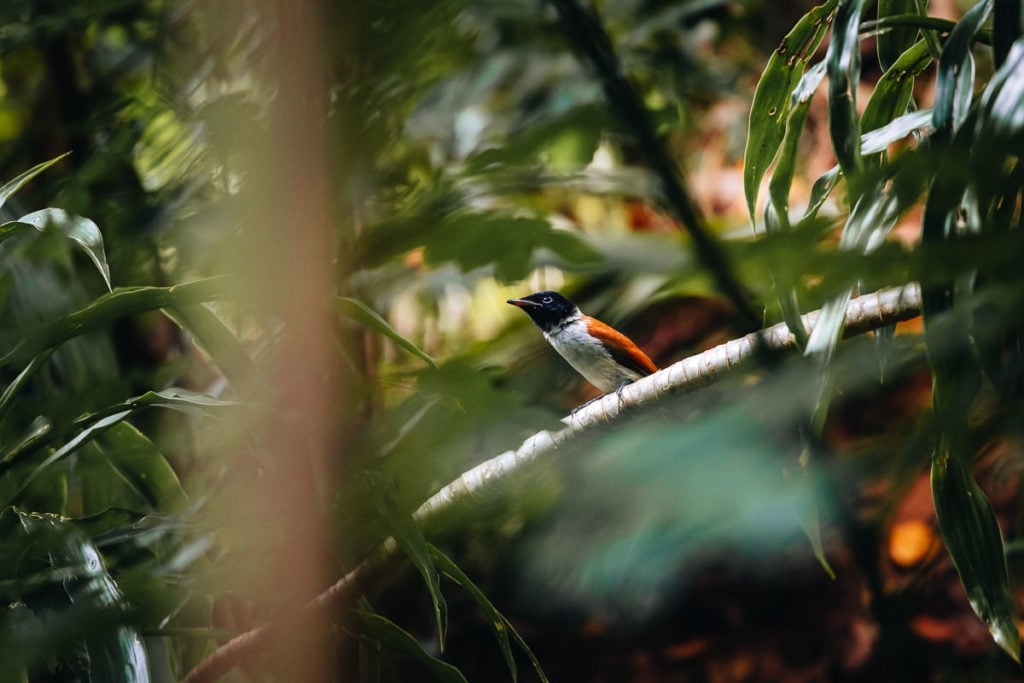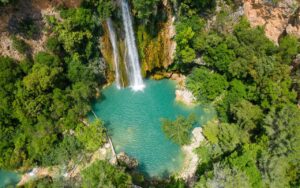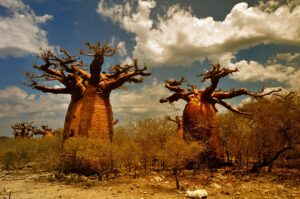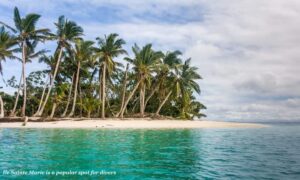La Digue Veuve Reserve: A Sanctuary for the Black Paradise Flycatcher
Nestled on the picturesque island of La Digue in the Seychelles, the Veuve Reserve is a hidden gem that offers a unique glimpse into the natural world. This sanctuary is dedicated to the protection of the Black Paradise Flycatcher, a rare and endangered bird species that is native to the island. The reserve is a must-visit for nature lovers and bird enthusiasts, providing a serene escape into the lush greenery and vibrant wildlife of the Seychelles.
What to See
The Veuve Reserve is a small but rich ecosystem, teeming with diverse flora and fauna. As you wander through the reserve, you’ll be surrounded by dense tropical vegetation, including towering takamaka trees and vibrant hibiscus flowers. The main attraction, of course, is the Black Paradise Flycatcher, locally known as “Veuve.” With its striking black plumage and long tail feathers, this bird is a sight to behold. Visitors can often spot these birds flitting through the trees, especially during the breeding season from September to March.
In addition to the flycatchers, the reserve is home to other bird species, such as the Seychelles Bulbul and the Seychelles Sunbird. The tranquil environment also supports a variety of reptiles and insects, making it a fascinating spot for wildlife observation. A small visitor center at the entrance provides information about the reserve’s inhabitants and conservation efforts.
A Bit of History and Interesting Facts
The Veuve Reserve was established in 1982 to protect the dwindling population of the Black Paradise Flycatcher, which was once on the brink of extinction. The reserve covers an area of about 21 hectares and is one of the few places where these birds can be found in their natural habitat. The name “Veuve” means “widow” in French, a reference to the bird’s black color, reminiscent of traditional mourning attire.
An interesting fact about the Black Paradise Flycatcher is its unique nesting behavior. The birds build their nests in the fork of tree branches, using materials like twigs, leaves, and spider webs. The male flycatcher is known for its elaborate courtship display, which involves singing and showcasing its long tail feathers to attract a mate.
Getting There and Tips for First-Time Visitors
La Digue is accessible by ferry from the main island of Mahé or from Praslin, another nearby island. Once on La Digue, the reserve is easily reachable by bicycle, the most popular mode of transport on the island. The reserve is located near the village of La Passe, and signs will guide you to the entrance.
For first-time visitors, it’s advisable to wear comfortable walking shoes and bring insect repellent, as the reserve is a natural habitat with plenty of insects. The best time to visit is early in the morning or late afternoon when the birds are most active. Guided tours are available and can enhance your experience by providing deeper insights into the reserve’s ecology and conservation efforts.
The Veuve Reserve is a peaceful retreat that offers a rare opportunity to connect with nature and witness the beauty of the Black Paradise Flycatcher. Whether you’re a seasoned birdwatcher or simply looking for a tranquil escape, this sanctuary is a testament to the importance of conservation and the wonders of the natural world.








